From Broadway Productions to School Auditoriums:
The change from the old opera house with its sand bag counter-weight units and great coils of rope has passed away years ago to be superseded by the modern movie theatre, civic auditorium, school auditorium and great music hall.
The interior of an auditorium, particularly the stage and to some extent even the lobby, is of tremendous importance in its effect upon the audience.
After the stage has been completely rigged, the next and most important part is the draperies that hang from the rigging. There are engineers, scenic artists and drapery artists who have made a life study of design and colors that should definitely harmonize with the construction and decoration of the interior of the auditorium.
“Sound is 50 percent of the movie going experience, and I’ve always believed audiences are moved and excited by what they hear in my movies at least as much as by what they see” says George Lucas. Part of what frustrated Lucas was the result of new theatre construction techniques ignoring every rule in the book – cut cost at the expense of quality. In an old theatre the last coat of plaster was pulled over cloth. The cloth served to adsorb sound eliminating reverberation problems. The drapes also worked to cut sound reverberation.
Nothing contributes to the success of an entertainment like the tastefully designed stage and its appropriate draperies, as the attention of the audience is focused upon them continuously. This, together with a well considered scheme for lighting stage, proscenium and auditorium should be executed under the direction of experts such as Rose Brands (1-800-360-5056). They fabricate custom stage curtains for venues ranging from Broadway productions to school auditoriums.
Listed here are several categories which show a good overview of design arrangements.
Corporate Promotion Curtains and Drapes
The first look is of stage productions for commercial presentations. Take a look at the photos of corporate promotions that Rose Brands was a key factor on. The interesting part is that their design is always a new and innovative use of theatre curtains.
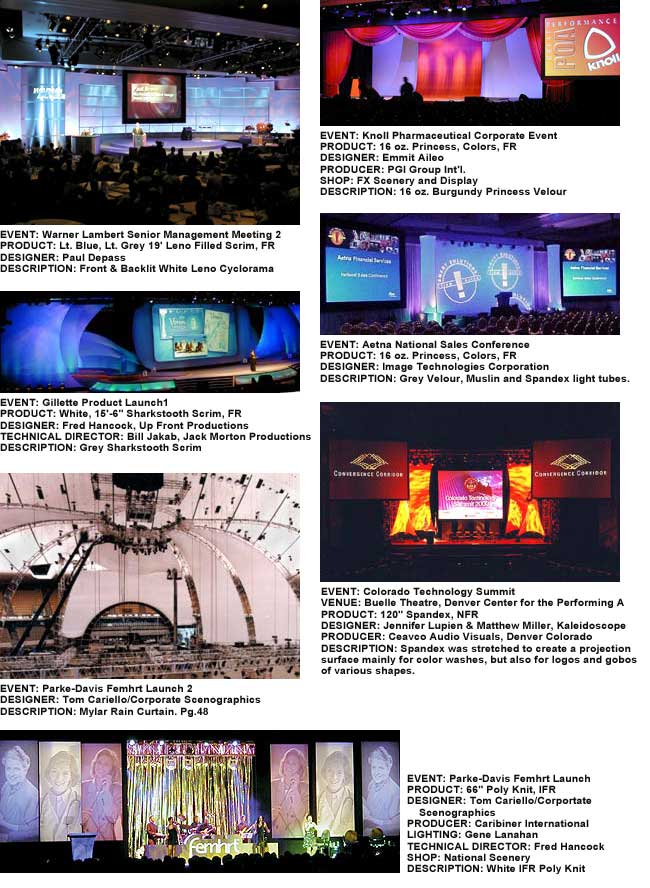
Events Curtains and Drapes
The use of drapes for events can be a make or break event. The photo that I think best shows their creativity is the Marc Anthony HBO Special, held December 8, 1999. The live broadcast of the concert was from Madison Square Garden kicking off his world tour. The set complimented his English-language hits, along with smashes from his three Spanish-language salsa albums, which established him as the top-selling salsa singer in the world.
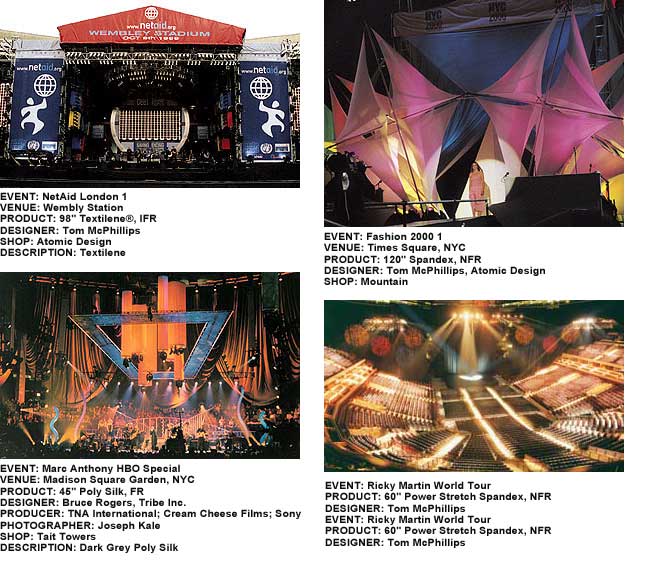
Scenic Draperies Curtains and Drapes
If you look at the photos, you can see through the drapes. Painting stars for a scene gives an illusion of depth and another dimension.
Note the photo from Big Apple Circus. It is a one ring circus headquartering in New York which features the world’s finest circus artists under the Big Apple Big Top performing in the theatrical focus of one ring with no seat more than 50 feet away. The scenic drape captures the feel of the circus.
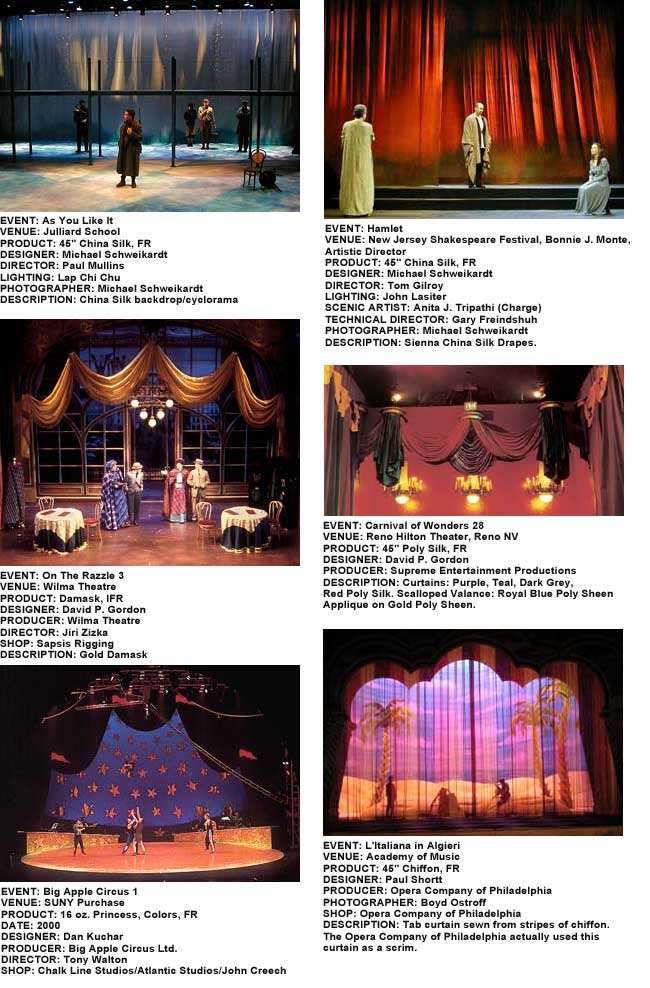
Miscellaneous Curtains and Drapes
Two different things are going on here. First we see a gorgeous translucent poly/metallic sheer with sparkling metallic threads forming a solid stripe pattern. With dancers in front of the curtain using travel spots, the light strikes the fabric and each metallic bit in the thread scatters the light with an explosion of glitter.
In the second photo we see the Mirballe curtain material looking like a mirror. Recalling some scenes from the Phantom of the Opera, you see Christine looking at her reflection in the mirror. Projecting light on the Marballe curtain from the back side exposes the figure behind the mirror. The material is partially reflective and partially transparent.
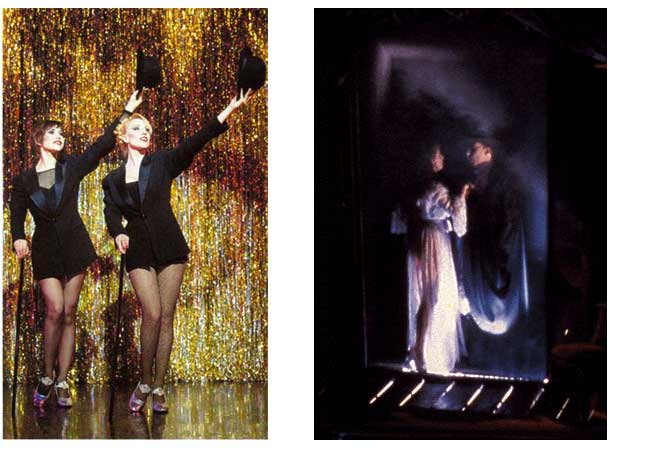
Shows Curtains and Drapes
Take a look at the scenic drape below used in Evita. Note that the stage is not that large. There really are not lots of people on stage. The scenic drape serves to create an illusion of a large crowd in a big space with lots of activity going on.
Looking at first photo, we see that there are only six people on stage. The drape design functions to call all attention to the center of the stage. Note that the main curtain is pulled up bit in the center with a spot highlighting the singer.
Looking at second photo, we see the light shinning through small parts the drape from the back creating a background of a sparkle of light.
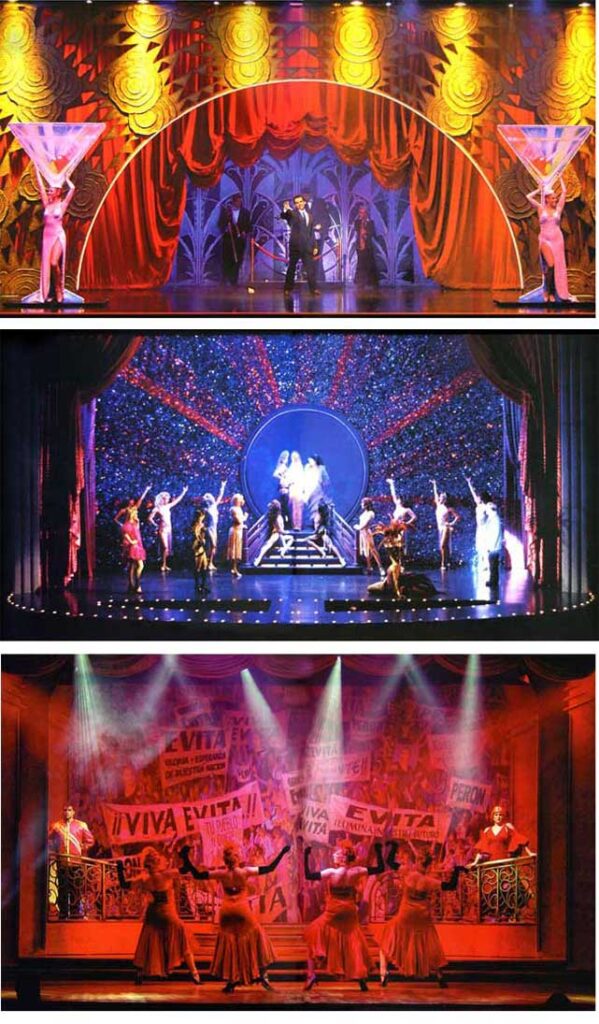
Parties Curtains and Drapes
For this party that is a must, make sure that you have bottomless pockets. The Soprano’s Wrap Party, (first photo) where perhaps as many as 6,000 “Sopranos” goombares turned up to say goodbye to just the friggin’ greatest TV show ever. Yes, that party. Nine episodes to go. We saw the first two at Radio City Music Hall. What a night. What a night. Still recovering — Newsday.com. The drapes look easy until you have to figure out how to rif it and how to back lite it.
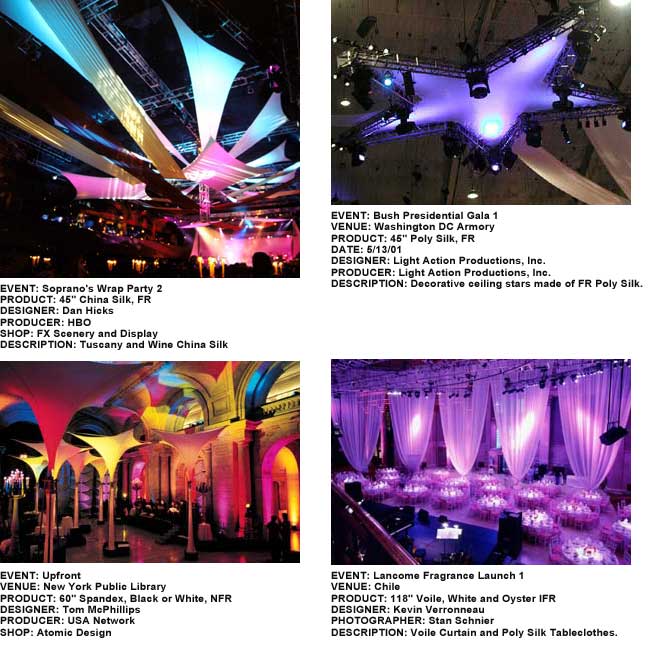
Theatrical Curtains and Drapes
The Hirschfeld theatre in New York did A Tale of Two Cities designed by Tony Walton. As an award winning designer-director of theatre and film, Tony Walton has been a loyal client and long time friend of George Jacobstein, owner of Rose Brand. In a relationship lasting over 25 years, collaborative work has included many shows, including The Big Apple Circus, Annie Get Your Gun, Anything Goes, and Grand Hotel.
For A Tale of Two Cities, Rose Brand has manufactured the grand drape, 32’-10” high x 47’-0” wide constructed of 300 yards of FR Venetian Scroll fabric with an ambitious amount of trim, including Gold Serpentine Rope, Gold Raised Circle, Gold Filigree, Gold Turkish and Gold Design weight 18” Bullion Fringe. It is truly a 19th century confection.
Here are six photos of theatrical curtains including some of those mentioned above.
Grateful thanks is given to Mary Katherine Vandiver who gave us permission to use the photos for our article. All photos are copyrighted and property of Rose Brands.
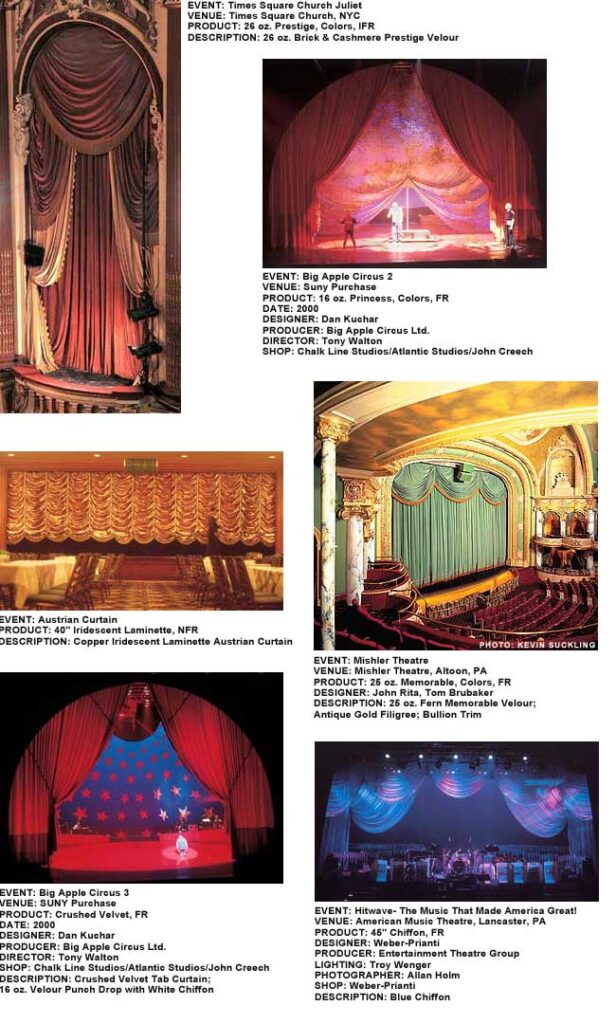
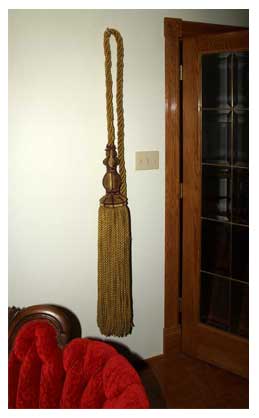
Curtain and Drapery History
Milwaukeean Jim Rankin was probably one of the best theatre historians the U.S. has produced. In 1989 he received the Jeffrey Weiss Literary Award from the Theatre Historical Society of America for his 60 page article entitled Theatre Passementerie. Passementerie is the art of making elaborate trimmings or edgings or to put it in easier terms, theatre curtains. Winning entries for the Jeffrey Weiss Literary Award are normally submitted for publication in Marquee, the Society’s quarterly journal. Unfortunately the article was far too long to run. Somehow the article and photos fell into careless hands and became lost. And with that the definitive article on theatre drapes disappeared along with the person.
The photo at the right is a tassel from the Warner Theatre in Milwaukee, Wis. which was used to hold drapes in place. Note the size and how elaborate it was.
